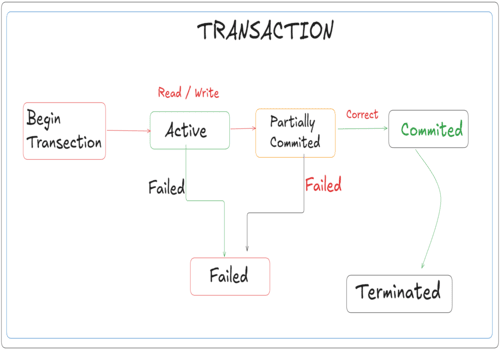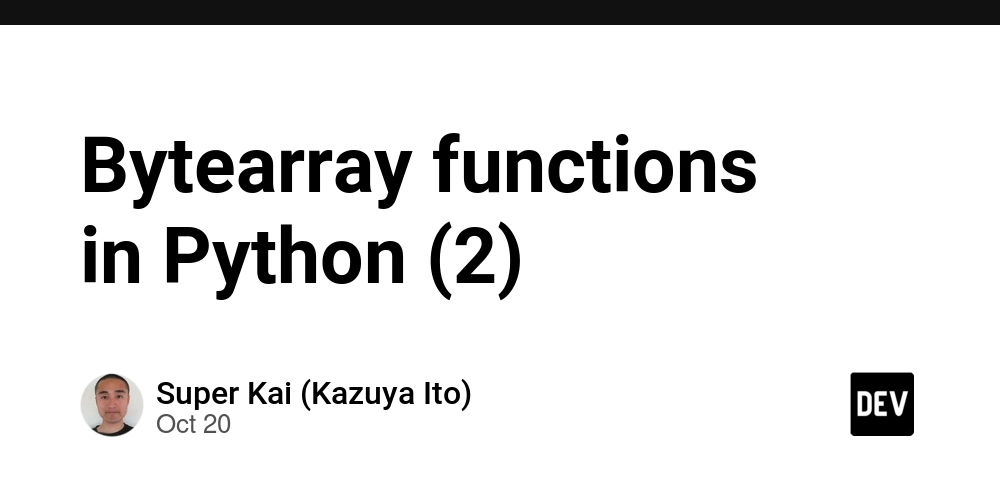The Power of Transactions & ACID . Before a Data Engineer can design reliable data systems or move petabytes through ETL pipelines, one question always echoes:
💭 How does a database keep data accurate and safe — even when hundreds of things happen at the same time?
The answer lies in transactions and the ACID properties — the unshakable pillars that make relational databases like PostgreSQL so reliable.
⚙️ What Is a Transaction?
A transaction is a sequence of one or more database operations (INSERT, UPDATE, DELETE, etc.) that act as a single logical unit of work.
Rule: A transaction must fully succeed or fully fail — there’s no halfway.
Think of it as a sealed envelope — you either deliver it completely or destroy it; you never send half a letter.
💡 Why It Matters
Without transactions, systems would constantly fall into inconsistent states:
- 💸 Money deducted from one account but never credited to another.
- 📦 Inventory reduced but the order never created.
- 🧍 User deleted but their related records still exist elsewhere.
Transactions keep your system trustworthy and predictable.
💰 Example: Money Transfer Scenario
You send 1000 BDT to your friend:
1️⃣ Your balance decreases by 1000.
2️⃣ Your friend’s balance increases by 1000.
If step 1 succeeds but step 2 fails → ❌ inconsistent state (you lose money).
A transaction ensures:
✅ Either both succeed, or
🔁 both roll back (cancelled)
That’s Atomicity in action — all or nothing.
🔄 Transaction Lifecycle in PostgreSQL
Every transaction goes through five predictable stages:
| Stage | Description | Example |
|---|---|---|
| Active | Transaction is running; statements executing. | You start transferring money. |
| Partially Committed | All commands run but not yet saved. | Balance reduced, waiting to finalize. |
| Committed | Changes are permanently stored. | Both accounts updated successfully. |
| Failed | An error occurred before commit. | Network error or insufficient funds. |
| Terminated | Transaction ends (success or rollback). | Process closed. |
🧩 This lifecycle guarantees data safety even under heavy system load.
🧱 ACID — The Pillars of Reliable Databases
What Is ACID?
ACID stands for Atomicity, Consistency, Isolation, and Durability —
four principles that make transactions predictable, recoverable, and safe.
Let’s break them down 👇
🔸 A — Atomicity (All or Nothing)
| Concept | Explanation |
|---|---|
| Meaning | Treat every transaction as a single unit — it either completes fully or doesn’t happen at all. |
| Why It Matters | Prevents partial changes that corrupt data. |
| Example | Debit from A, credit to B. If credit fails, debit is rolled back. |
| Under the Hood | Databases use logs and checkpoints to undo incomplete transactions. |
🧩 No half-done operations.
🔸 C — Consistency (Follow the Rules)
| Concept | Explanation |
|---|---|
| Meaning | The database must always move from one valid state to another. |
| Why It Matters | Ensures that rules, constraints, and relationships stay true. |
| Example | Age can’t be negative. Email must be unique. Foreign keys must match. |
| Under the Hood | Constraints are verified before commit; invalid data = rollback. |
🧩 Data always obeys the rules.
🔸 I — Isolation (Don’t Disturb Others)
| Concept | Explanation |
|---|---|
| Meaning | Each transaction behaves as if it’s running alone. |
| Why It Matters | Prevents interference between concurrent users. |
| Example | Two people buy the last item — isolation ensures only one succeeds. |
| Under the Hood | Controlled through isolation levels: Read Uncommitted → Serializable. Higher isolation = more safety (and more cost). |
🧩 Transactions run independently — like private sessions.
🔸 D — Durability (It Stays Forever)
| Concept | Explanation |
|---|---|
| Meaning | Once committed, data is safe — even after a crash or restart. |
| Why It Matters | Guarantees persistence of committed changes. |
| Example | PostgreSQL’s Write-Ahead Log (WAL) ensures recovery after system failure. |
| Under the Hood | Uses logs, checkpoints, and replication to preserve data. |
🧩 Committed = permanent.
💬 Why ACID Matters
Without ACID, your database becomes chaos in disguise:
- ❌ Data could vanish midway through a transaction.
- ⚠️ Tables might drift into inconsistent states.
- 😵 Queries could return half-truths or outdated values.
- 💥 Under heavy load, transactions might overwrite or corrupt each other.
ACID transforms chaos into order.
It’s what allows banks, hospitals, and analytics systems to trust every single bit of data.
💡 Remember: every failed constraint or rejected transaction isn’t a problem — it’s your database defending its integrity. When a rule fails, Consistency and Atomicity are doing their job.
🏦 Consistency Models — Immediate vs Eventual
| Model | Definition | Example Use Case | Explanation |
|---|---|---|---|
| Immediate Consistency | Once committed, all users instantly see the new data. | 🏧 Banking, OLTP, payment systems. | After sending 1000 BDT, your friend’s balance updates immediately. |
| Eventual Consistency | Temporary differences allowed across replicas; all copies sync eventually. | 📱 Social media, NoSQL, caches. | Post a photo — visible to some users right away, others after sync delay. |
🧭 Choose the model that fits your workload:
- Need accuracy + safety → Immediate Consistency
- Need speed + scalability → Eventual Consistency
🔍 Read Anomalies — When Isolation Breaks Down
When multiple transactions run at once, weak isolation can cause strange behavior:
| Phenomenon | Definition | Scenario | Explanation |
|---|---|---|---|
| Dirty Read | Reading uncommitted data from another transaction. | You see your friend’s new balance before they commit. | May show rolled-back data. PostgreSQL prevents this. |
| Non-Repeatable Read | Same query returns different results within one transaction. | You read 1000 BDT → another updates to 2000 BDT → you re-read → 2000. | Value changed mid-transaction. |
| Phantom Read | Re-running a query returns a different number of rows. | You count 5 orders → another adds 1 → you count again → 6. | New rows appeared during your transaction. |
💡 Higher isolation reduces anomalies — at the cost of speed.
🧱 Transaction Isolation Levels (PostgreSQL)
| Level | Prevents | Allows | Best For |
|---|---|---|---|
| Read Uncommitted | Nothing | Dirty reads | ⚠️ Not supported (too unsafe). |
| Read Committed (Default) | Dirty reads | Non-repeatable & phantom reads | General workloads — balanced choice. |
| Repeatable Read | Dirty + Non-repeatable reads | Phantom reads | Analytical queries, consistent snapshots. |
| Serializable | All anomalies | None | 🏦 Banking, critical transactions. |
💰 Banking Scenario Example
Two users withdraw from the same account (1000 BDT):
BEGIN TRANSACTION ISOLATION LEVEL SERIALIZABLE;
UPDATE accounts SET balance = balance - 1000 WHERE id = 1;
COMMIT;
- Read Committed: both might withdraw — race condition 💥
- Serializable: only one withdrawal succeeds ✅
⚙️ Quick Recap
| Concept | Safe? | Speed | Ideal Use Case |
|---|---|---|---|
| Immediate Consistency | ✅ High | 🐢 Slower | Banking, inventory |
| Eventual Consistency | ⚠️ Eventually | ⚡ Faster | Social media, caching |
| Serializable | 🧱 Very Safe | 🐢 Slowest | Finance, critical data |
| Read Committed | ⚖️ Balanced | ⚡ Fast | Default workloads |
🧭 Visual Summary — From Transactions to Reliable Systems
🧠 START → Understanding Reliable Databases
↓
📦 Transaction
• Group of operations acting as one (e.g., money transfer)
↓
⚖️ ACID Properties — Ensure Reliability
├── 🔸 Atomicity → All or none succeed
├── 🔸 Consistency → Database remains valid
├── 🔸 Isolation → Independent transactions
└── 🔸 Durability → Data stays permanent
↓
🔍 Concurrency & Anomalies
├── Dirty Read → Read uncommitted data
├── Non-Repeatable Read → Changing results
└── Phantom Read → Changing row counts
↓
🧱 Isolation Levels (PostgreSQL)
├── Read Committed → Default, safe & fast
├── Repeatable Read → Consistent snapshots
└── Serializable → Full protection
↓
🏦 Consistency Models (Distributed)
├── Immediate Consistency → Banking
└── Eventual Consistency → Social apps
↓
🧩 Choose Wisely
├── Accuracy → Immediate + Serializable
└── Scale → Eventual + Read Committed
↓
🎯 END → Reliable, Scalable & Consistent Data Systems
🌐 Let’s Connect!
If you found this guide helpful, I’d love to hear from you!
Follow or reach out to me on social media 👇
- 🐙 GitHub – Check out my projects & experiments
- 💼 LinkedIn – Let’s grow our dev network
- 🎥 YouTube – Watch tutorials & dev tips
- 🐦 X (Twitter) – Follow for quick updates & threads
💬 Feel free to comment, share, or drop a question — I’d love to connect with fellow learners and builders!





